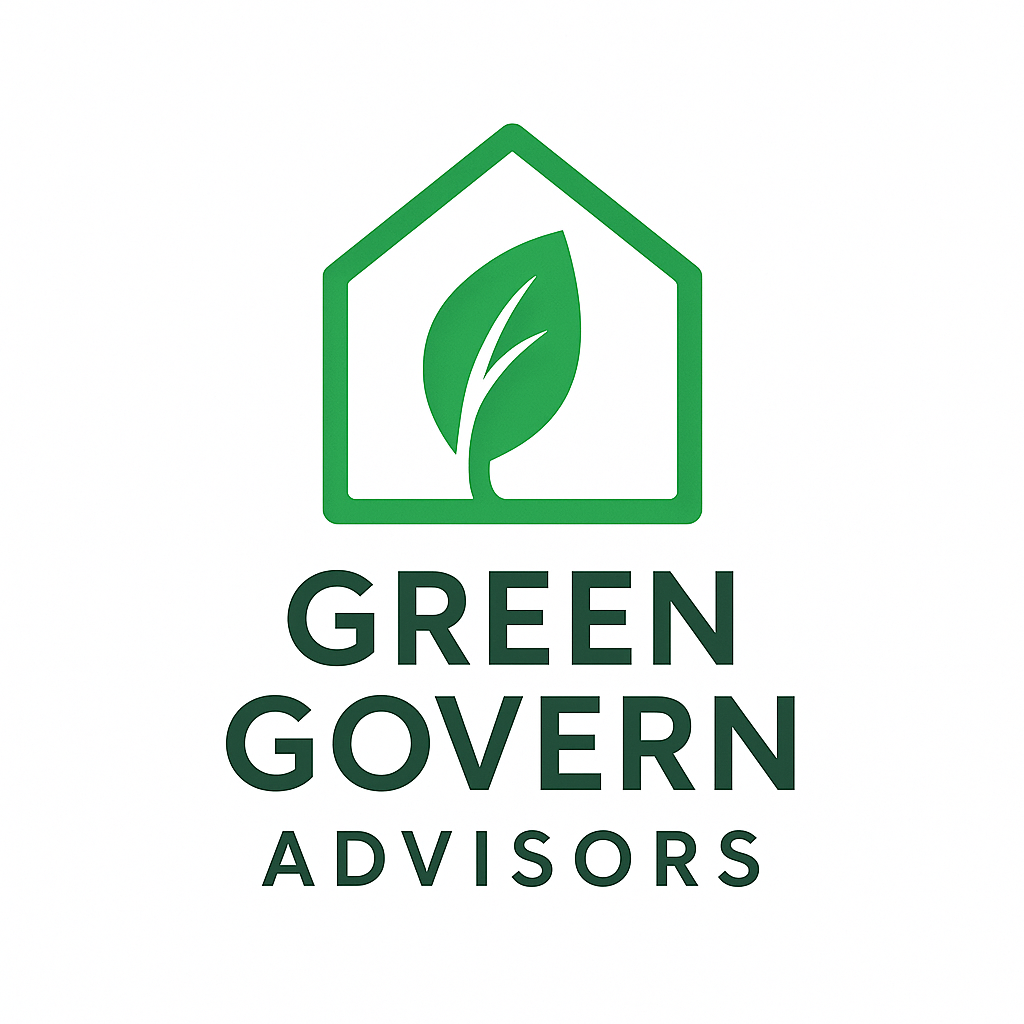Introduction: The ESG Transformation Is Global, Urgent, and Inevitable
Environmental, Social, and Governance (ESG) considerations have transitioned from voluntary goodwill initiatives to regulatory imperatives. ESG performance is no longer measured only by a company’s sustainability report—it is increasingly tied to financial materiality, investor confidence, and global access to capital.
By 2025, ESG investments are projected to exceed $53 trillion globally (PwC), representing more than a third of total assets under management. Yet this rise also brings complexity, particularly around data consistency, assurance, and regulation.
While Europe and North America have led the charge, India and China are now stepping into leadership roles, creating ESG regulations tailored to their economic structures, political systems, and development priorities. Their moves will help define how ESG standards work in emerging and transitional economies.
1. Global ESG Regulation: From Voluntary Disclosure to Mandatory Compliance
In the past decade, the ESG landscape has shifted from voluntary frameworks like GRI (Global Reporting Initiative) and CDP (Carbon Disclosure Project) to government-mandated, enforceable disclosure regimes.
📊 Key Regulatory Milestones
| Region | Regulation | Effective Date | Focus |
|---|---|---|---|
| EU | CSRD (Corporate Sustainability Reporting Directive) | 2024–2026 | Double materiality, third-party audits |
| US | SEC Climate Disclosure Rule | 2024 | Scope 1 & 2 emissions, governance, climate risk |
| UK | FCA ESG Rules | 2022–2024 | TCFD-based, mandatory for listed companies |
| Japan | Tokyo Stock Exchange ESG Framework | 2021 | Governance, environmental risk |
| Brazil | B3 Stock Exchange ESG Reporting Guidance | 2022 | Mandatory for major listed firms |
🌎 Takeaway: ESG has moved from “nice to have” to non-negotiable in corporate strategy and regulatory compliance.
2. India’s ESG Framework: BRSR, BRSR Core & Policy Alignment
India’s ESG journey is methodical and increasingly comprehensive. The Securities and Exchange Board of India (SEBI) has designed a phased approach, using both voluntary frameworks and hard mandates to elevate ESG standards across listed entities.
🧾 Key Frameworks:
- BRSR (Business Responsibility and Sustainability Report) – Mandatory since FY 2022–23 for the top 1,000 listed companies.
- BRSR Core – Introduced in 2024 for standardized assurance, ensuring ESG data is auditable and comparable.
🧱 Structure of BRSR:
| Pillar | Key Metrics |
|---|---|
| Environmental | GHG emissions (Scope 1 & 2), water intensity, energy usage |
| Social | Workforce diversity, occupational safety, community development |
| Governance | Board independence, anti-corruption, CSR policy implementation |
🔍 Real Case: Tata Consultancy Services (TCS)
- Achieved carbon neutrality in Scope 1 & 2 in multiple business units.
- Over 36% of workforce are women as of FY2023.
- Disclosed waste reduction KPIs and used integrated reporting standards aligned with GRI and TCFD.
🎯 India’s Policy Drivers for ESG
- Net Zero by 2070: Nationally Determined Contributions (NDCs) under the Paris Agreement.
- PLI Schemes: Emphasis on clean energy manufacturing and sustainability in industrial processes.
- Investors’ Push: Domestic institutional investors are demanding ESG alignment for long-term value protection.
- UN SDG Alignment: India’s ESG approach intersects heavily with the Sustainable Development Goals (SDGs), particularly gender equality, affordable energy, and climate action.
3. China’s ESG Playbook: Centralized, Tech-Driven, Global-Ambitious
China’s approach to ESG is deeply integrated into its national economic planning, but it diverges from Western ESG models in several key ways:
- State-driven coordination rather than market-driven standard-setting
- Emphasis on environmental and social order over governance liberalization
- Leveraging technology—AI, blockchain, and satellites—for emissions monitoring and ESG verification
🏢 Real Case: PetroChina
PetroChina’s 2023 ESG report highlighted:
- 9% reduction in methane intensity
- Implementation of a blockchain-based carbon footprint system
- Investments in over 30 gigawatts of renewable energy capacity
🧠 Unlike India, which still relies on manual disclosures, China is racing ahead in tech-led ESG enforcement.
🧭 China’s Regulatory Backbone
- CSRC ESG Guidelines for listed companies (2022)
- Green Finance Taxonomy (aligned with EU’s to some extent)
- Mandatory disclosures for high-emission SOEs in steel, cement, and petrochemicals
China’s “Common Prosperity” agenda also ties social equity goals into ESG mandates, focusing on anti-poverty, labor rights, and ethical tech development.
4. Comparing India & China on ESG Metrics
| Category | India | China |
|---|---|---|
| ESG Framework | BRSR, BRSR Core | CSRC guidelines, Green Bond Principles |
| Disclosure Mandate | Top 1,000 firms | State-owned + pilot sectors |
| Assurance Mechanism | Third-party encouraged under BRSR Core | Limited, evolving |
| ESG Tech Adoption | Early stage | Advanced (AI, blockchain, satellites) |
| Board Gender Diversity Mandates | SEBI requires at least one woman director | No formal requirement |
| Scope 3 Emission Reporting | Not yet mandatory | Pilots in select sectors |
| ESG Integration in Lending | Early-stage green loans | Strong green finance enforcement by PBoC |
5. Social & Governance Pillars: Often Overlooked, Increasingly Critical
🧍♀️ Social (S)
- India: High emphasis on gender inclusion, skilling, and social impact projects.
- Example: Mahindra & Mahindra’s “Nanhi Kali” girl education initiative is embedded in its ESG framework.
- China: Focused on job creation, rural development, and supply chain labor conditions.
⚖️ Governance (G)
- India’s SEBI mandates board composition standards, risk disclosures, and whistleblower mechanisms.
- In China, political control over corporate governance remains a challenge for ESG consistency, particularly in SOEs.
6. The Green Finance Boom in Asia
💰 India:
- Green bond market crossed $20 billion in 2024
- Major issuers: SBI, Power Finance Corporation, REC, IRFC
- RBI is exploring sustainability-linked lending benchmarks
💹 China:
- Over $80 billion in green bonds issued in 2023 alone
- Green bonds support projects in solar, hydrogen, and clean transport
- The People’s Bank of China (PBoC) uses ESG scores for credit risk models
📈 Both countries are leveraging capital markets to finance the energy transition.
7. Supply Chain Impact: ESG Beyond Borders
Many Indian and Chinese companies are deep within global supply chains, especially in textiles, auto components, electronics, and chemicals.
🔎 Investor Concern:
- ESG reputational risk from poor working conditions or environmental violations in upstream suppliers
- Western buyers now demand Scope 3 reporting and due diligence
📌 Example:
- Apple’s supply chain audits in China have triggered ESG reforms in firms like Foxconn, which now publishes labor-related ESG metrics.
- JSW Steel in India is investing in clean hydrogen to reduce embedded carbon in exports.
8. Startups, SMEs, and the ESG Compliance Gap
In India:
- SEBI plans to launch “BRSR Lite” for smaller firms by 2025
- But many startups still lack ESG literacy, risk frameworks, or compliance teams
In China:
- ESG scoring is increasingly linked to loan approval for SMEs
- Digital ESG passports are being piloted for startups to fast-track regulatory clearance
🌱 The challenge? Making ESG scalable and cost-efficient for smaller businesses.
9. Talent, Data & Assurance Gaps
A major constraint in both India and China is qualified ESG professionals. There is a widening gap between the demand for ESG talent and the supply of trained professionals capable of interpreting global frameworks like SASB, ISSB, and CSRD.
Data Challenges:
- Inconsistent metrics across sectors
- Lack of digitized, machine-readable ESG data
- Greenwashing risk due to poor verification
Solution:
- Capacity building via ESG certifications (e.g., CFA ESG, GARP SCR)
- Mandatory digital submissions using XBRL or blockchain-based ledgers
10. Looking Forward: Three Plausible ESG Futures
🚀 Scenario 1: Asia Emerges as ESG Leader
India and China create joint ESG tech ecosystems and become standard-setters in emerging markets.
📉 Scenario 2: ESG Gridlock
Geopolitical tension and inconsistent standards lead to data fragmentation, undermining cross-border ESG investments.
🌐 Scenario 3: Global Harmonization
Through G20, ISSB, and trade agreements, ESG standards converge, enabling better comparability and capital flows.
11. Action Items: What Stakeholders Must Do
For Businesses:
- Prepare for Scope 3 and supply chain disclosure
- Shift from marketing-based sustainability to audit-ready ESG data
- Align internal risk management with ESG KPIs
For Policymakers:
- Accelerate ESG assurance rules
- Mandate ESG integration in banking, procurement, and trade policy
- Provide funding and ESG capacity-building for SMEs
For Investors:
- Demand third-party verified ESG data
- Use tech-driven tools like Sylvera, RepRisk, and Morningstar Atlas
- Avoid overreliance on ESG scores without methodological transparency
Conclusion: The ESG Moment Is Now, and Asia Is Central
India and China are at the heart of the next phase in ESG evolution. While they differ in regulatory philosophies, both are making ESG compliance central to economic policy, global competitiveness, and sustainable development.
- India is building a layered, transparent system through BRSR and green finance strategies.
- China is leading in ESG technology integration and policy-backed enforcement.
For businesses, investors, and regulators, one truth stands clear: ESG is no longer about perception—it is about performance, accountability, and survival.
📚 References:
- SEBI: BRSR Core Framework (2024)
- CSRC: ESG Guidelines for Listed Firms (2023)
- PwC ESG Outlook 2025
- CDP Scope 3 Emission Gap Report (2023)
- RBI Green Bond Framework
- Infosys ESG Report (2023)
- PetroChina Sustainability Report (2023)
- ISSB Global Baseline Standards (2024)

